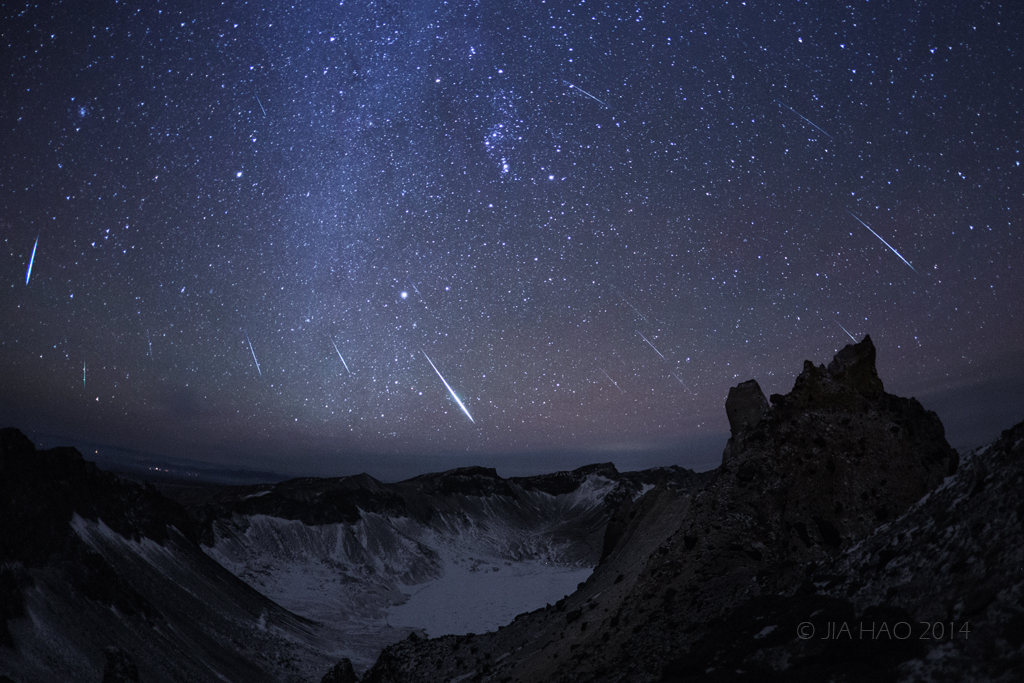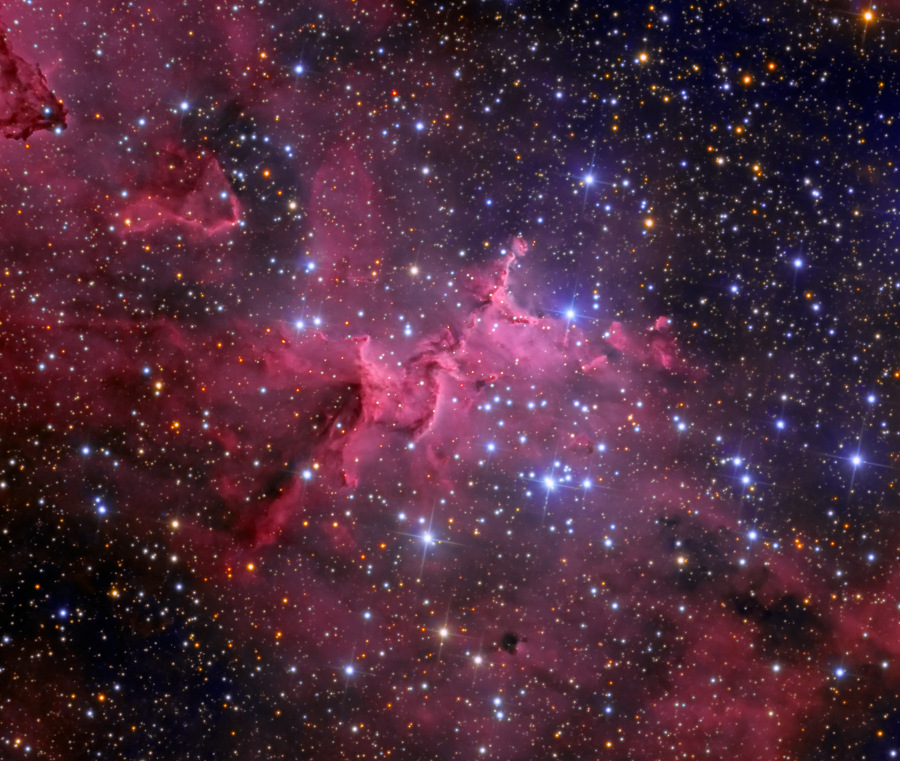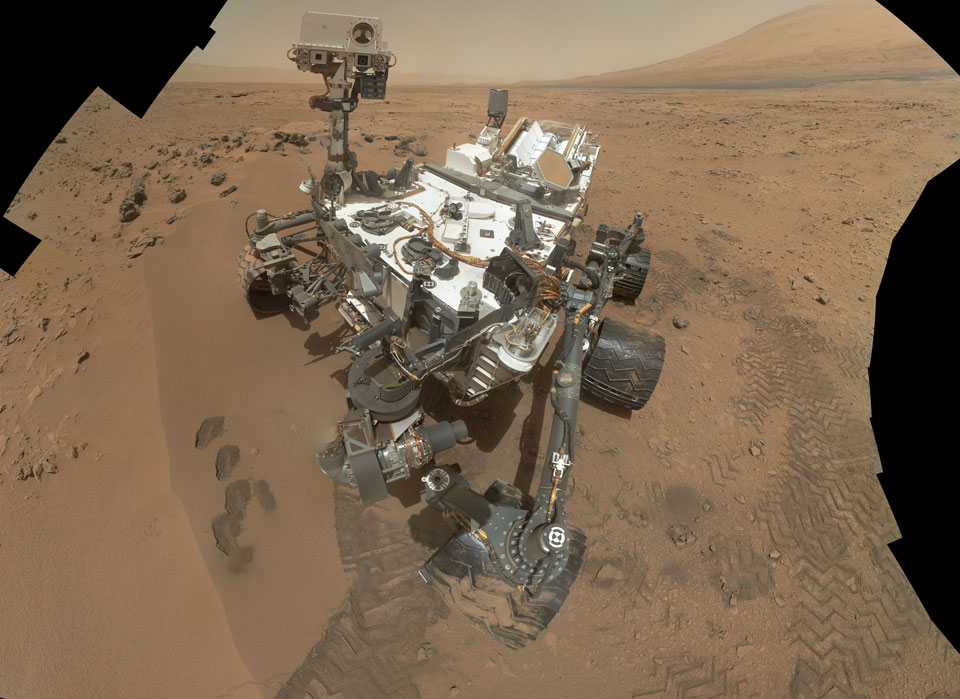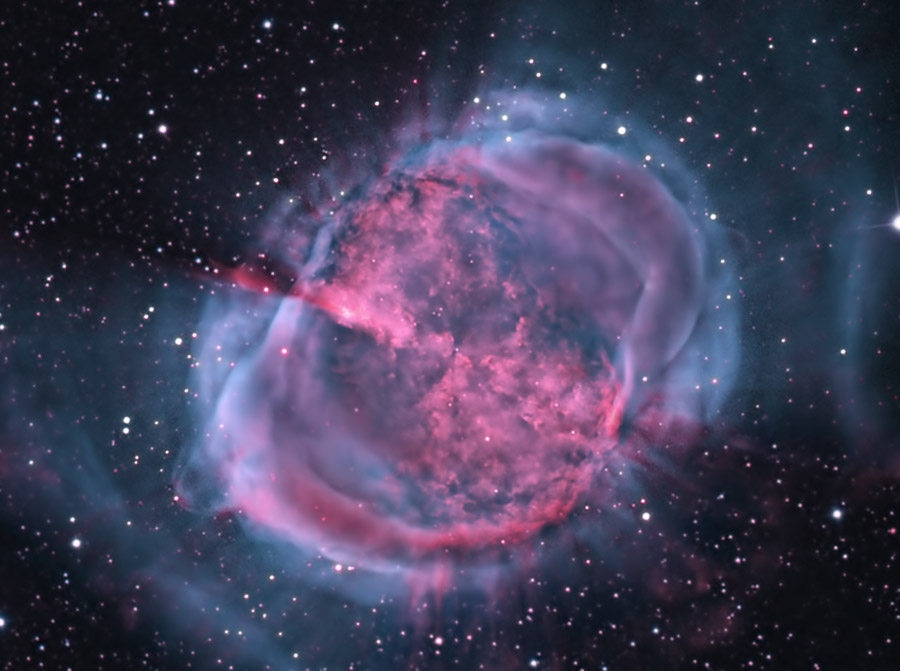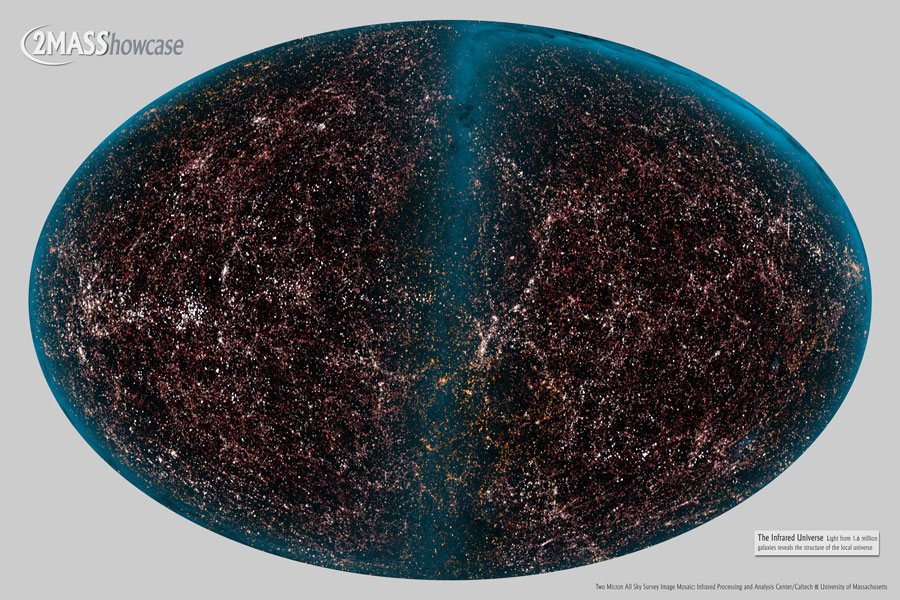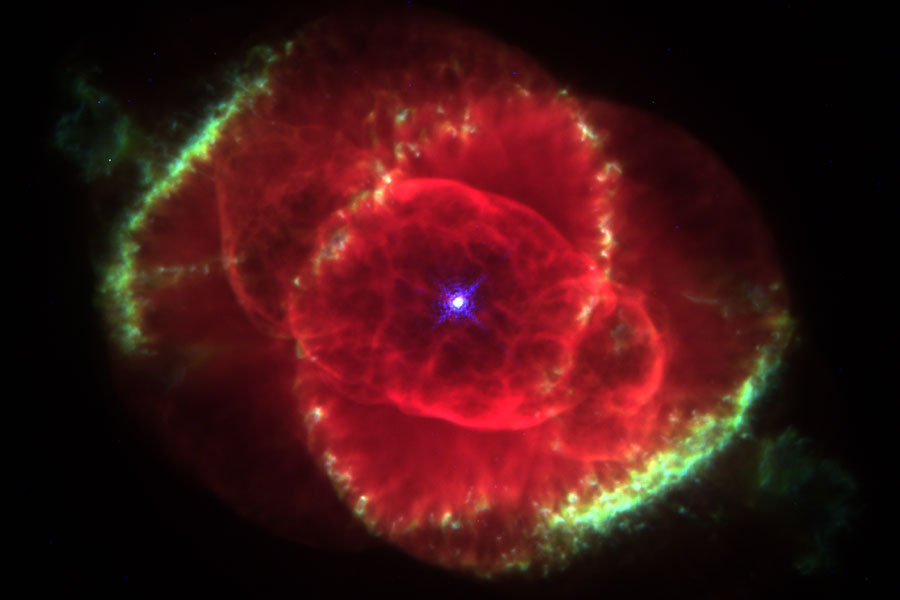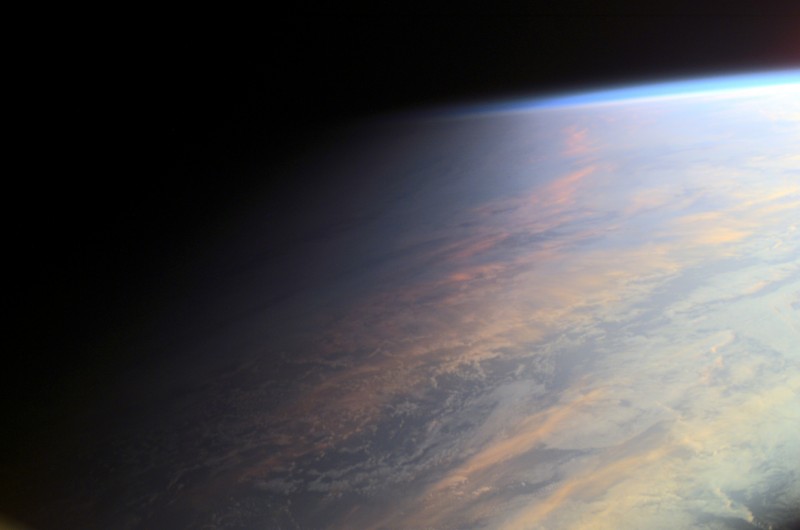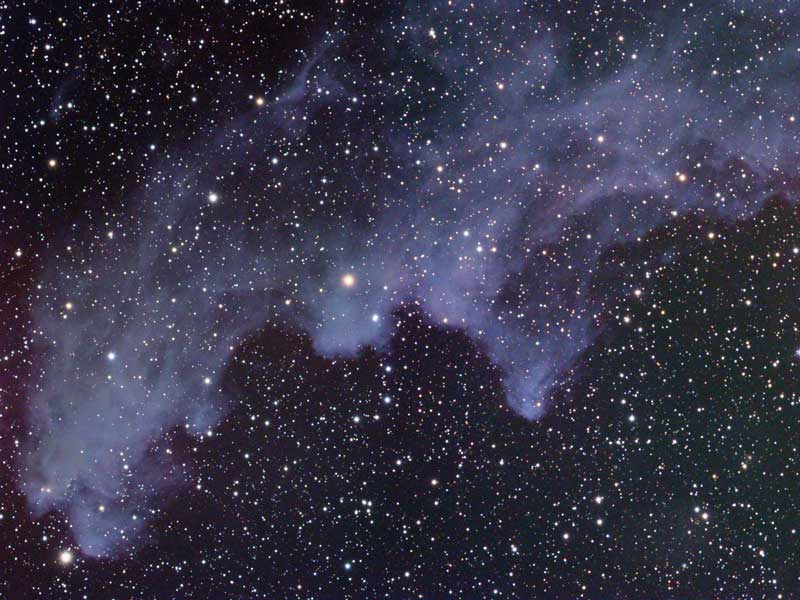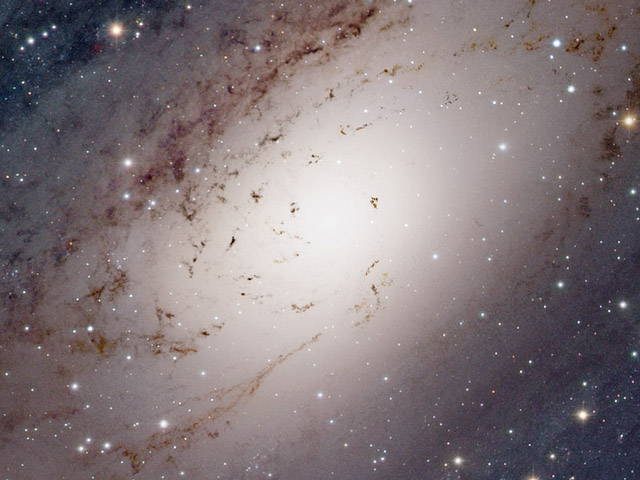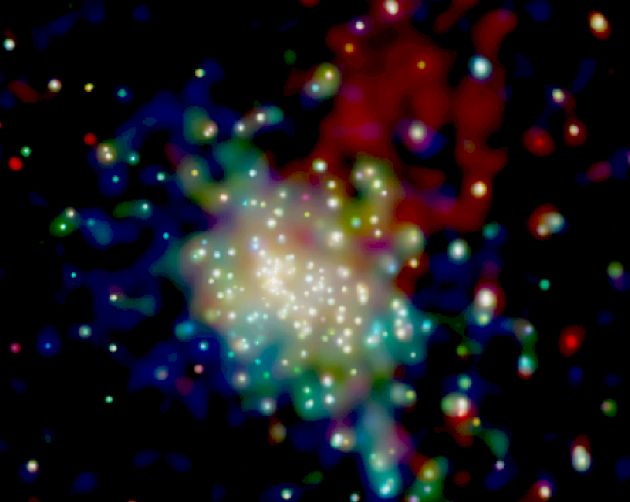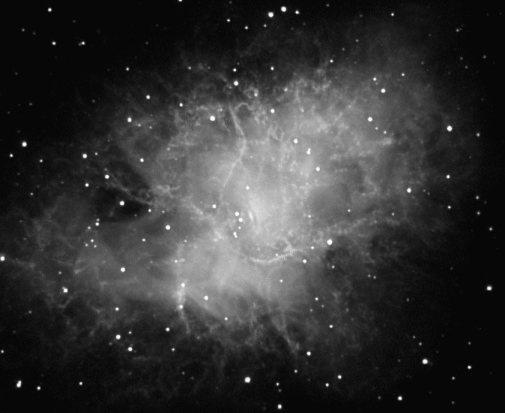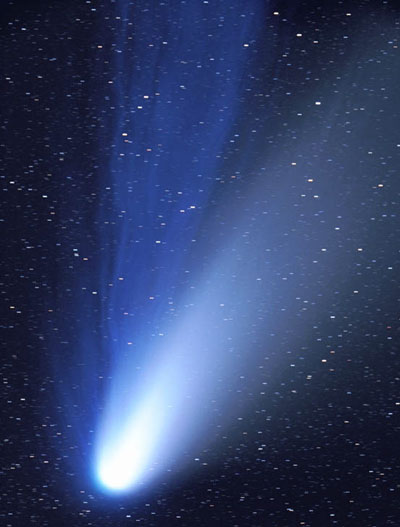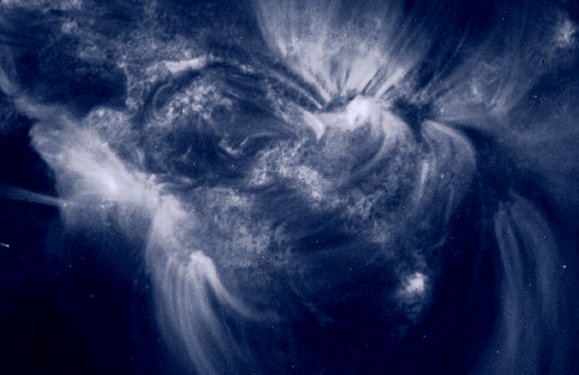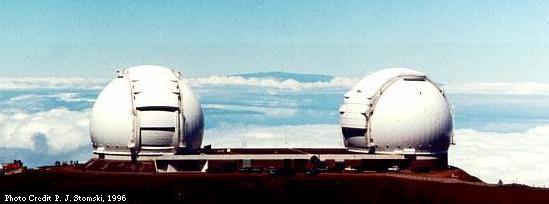| << Previous | Index | Next >> |
2014 Known in the north as a winter meteor shower, the 2014 Geminids rain down on this rugged, frozen landscape. The scene was recorded from the summit of Mt. Changbai along China's northeastern border with North Korea as a composite of digital frames capturing bright meteors near the shower's peak. Orion is near picture center above the volcanic cater lake. The shower's radiant in the constellation Gemini is to the upper left, at the apparent orgin of all the meteor streaks. Paying the price for such a dreamlike view of the celestial spectacle, photographer Jia Hao reports severe wind gusts and wintery minus 34 degree C temperatures near the summit.
2013 Cosmic clouds seem to form fantastic shapes in the central regions of emission nebula IC 1805. Of course, the clouds are sculpted by stellar winds and radiation from massive hot stars in the nebula's newborn star cluster, Melotte 15. About 1.5 million years young, the cluster stars are near the center of this colorful skyscape, along with dark dust clouds in silhouette. Dominated by emission from atomic hydrogen, the telescopic view spans about 30 light-years. But wider field images reveal that IC 1805's simpler, overall outline suggests its popular name - The Heart Nebula. IC 1805 is located along the northern Milky Way, about 7,500 light years distant toward the constellation Cassiopeia.
2012 What's in this smooth soil on Mars? In late October, NASA's robotic Curiosity rover stopped near a place dubbed Rocknest as it continues to explore Gale Crater on Mars. Rocknest is the group of stones seen near the top left of the above image -- just to the left of Curiosity's mast. Of particular interest was the unusually smooth patch of soil named Wind Drift seen to the left of Curiosity, which was likely created by the Martian wind blowing fine particles into Rocknest's wake. The above image shows part of Mt. Sharp in the background to upper right, and, oddly, almost the entire rover itself, digitally reconstructed from 55 frames while digitally removing an extended arm. Curiosity scooped several sand samples from Wind Drift into its Chemistry and Mineralogy Experiment (CheMin) and the Sample Analysis at Mars (SAM) laboratory for a detailed analysis. Preliminary data from the soil indicates a small amount of one-carbon organic material the origin of which it presently unknown. Although the organic signal might be just contaminants from Earth, the exciting possibility that it could be from Mars itself will remain a focus of future exploration and research.
2011 The first hint of what will become of our Sun was discovered inadvertently in 1764. At that time, Charles Messier was compiling a list of diffuse objects not to be confused with comets. The 27th object on Messier's list, now known as M27 or the Dumbbell Nebula, is a planetary nebula, the type of nebula our Sun will produce when nuclear fusion stops in its core. M27 is one of the brightest planetary nebulae on the sky, and can be seen toward the constellation of the Fox (Vulpecula) with binoculars. It takes light about 1000 years to reach us from M27, shown above in colors emitted by hydrogen and oxygen. Understanding the physics and significance of M27 was well beyond 18th century science. Even today, many things remain mysterious about bipolar planetary nebula like M27, including the physical mechanism that expels a low-mass star's gaseous outer-envelope, leaving an X-ray hot white dwarf.
2010 Are the nearest galaxies distributed randomly? A plot of over one million of the brightest "extended sources" detected by the Two Micron All Sky Survey (2MASS) shows that they are not. The vast majority of these infrared extended sources are galaxies. Visible above is an incredible tapestry of structure that provides limits on how the universe formed and evolved. Many galaxies are gravitationally bound together to form clusters, which themselves are loosely bound into superclusters, which in turn are sometimes seen to align over even larger scale structures. In contrast, very bright stars inside our own Milky Way Galaxy cause the vertical blue sash.
2009 Three thousand light-years away, a dying star throws off shells of glowing gas. This image from the Hubble Space Telescope reveals the Cat's Eye Nebula to be one of the most complex planetary nebulae known. In fact, the features seen in the Cat's Eye are so complex that astronomers suspect the bright central object may actually be a binary star system. The term planetary nebula, used to describe this general class of objects, is misleading. Although these objects may appear round and planet-like in small telescopes, high resolution images reveal them to be stars surrounded by cocoons of gas blown off in the late stages of stellar evolution.
2008 The Crab Pulsar, a city-sized, magnetized neutron star spinning 30 times a second, lies at the center of this remarkable image from the orbiting Chandra Observatory. The deep x-ray image gives the first clear view of the convoluted boundaries of the Crab's pulsar wind nebula. Like a cosmic dynamo the pulsar powers the x-ray emission. The pulsar's energy accelerates charged particles, producing eerie, glowing x-ray jets directed away from the poles and an intense wind in the equatorial direction. Intriguing edges are created as the charged particles stream away, eventually losing energy as they interact with the pulsar's strong magnetic field. With more mass than the Sun and the density of an atomic nucleus, the spinning pulsar itself is the collapsed core of a massive star. The stellar core collapse resulted in a supernova explosion that was witnessed in the year 1054. This Chandra image spans just under 9 light-years at the Crab's estimated distance of 6,000 light-years.
2007 No sudden, sharp boundary marks the passage of day into night in this gorgeous view of ocean and clouds over our fair planet Earth. Instead, the shadow line or terminator is diffuse and shows the gradual transition to darkness we experience as twilight. With the Sun illuminating the scene from the right, the cloud tops reflect gently reddened sunlight filtered through the dusty troposphere, the lowest layer of the planet's nurturing atmosphere. A clear high altitude layer, visible along the dayside's upper edge, scatters blue sunlight and fades into the blackness of space. This picture actually is a single digital photograph taken in June of 2001 from the International Space Station orbiting at an altitude of 211 nautical miles.
2006
[imghover6=http://apod.nasa.gov/apod/image/0612/ic ... ral720.jpg]http://apod.nasa.gov/apod/image/0612/ic ... ped720.jpg[/imghover6]Credit & Copyright: Russell Croman
2005 Double, double toil and trouble; Fire burn, and cauldron bubble -- maybe Macbeth should have consulted the Witch Head Nebula. This suggestively shaped reflection nebula is associated with the bright star Rigel in the constellation Orion. More formally known as IC 2118, the Witch Head Nebula glows primarily by light reflected from Rigel, located just outside the top right corner of the above image. Fine dust in the nebula reflects the light. The blue color is caused not only by Rigel's blue color but because the dust grains reflect blue light more efficiently than red. The same physical process causes Earth's daytime sky to appear blue, although the scatterers in Earth's atmosphere are molecules of nitrogen and oxygen. The nebula lies about 1000 light-years away.
2004 The center of the Andromeda galaxy is beautiful but strange. Andromeda, indexed as M31, is so close to our own Milky Way Galaxy that it gives a unique perspective into galaxy composition by allowing us to see into its core. Billions of stars swarm around a center that has two nuclei and likely houses a supermassive black hole over 5 million times the mass of our Sun. M31 is about two million light years away and visible with the unaided eye towards the constellation of Andromeda, the princess. Pictured above, dark knots of dust are seen superposed on the inner 10,000 light years of M31's core. The brighter stars are foreground stars located in our Milky Way Galaxy.
2003 Perhaps the most famous star cluster on the sky, the Pleiades can be seen without binoculars from even the depths of a light-polluted city. Also known as the Seven Sisters and M45, the Pleiades is one of the brightest and closest open clusters. The Pleiades contains over 3000 stars, is about 400 light years away, and only 13 light years across. Quite evident in the above photograph are the blue reflection nebulae that surround the brighter cluster stars. Low mass, faint, brown dwarfs have also been found in the Pleiades. (Editors' note: The prominent diffraction spikes were added to the image for aesthetic reasons, produced by kite string donated by Rob Gendler's kids and placed over the telescope dew shield.)
2002 A mere 6,000 light-years distant and sailing through the constellation Vela, star cluster RCW 38 is full of powerful stars. It's no surprise that these stars, only a million years young with hot outer atmospheres, appear as point-like x-ray sources dotting this x-ray image from the orbiting Chandra Observatory. But the diffuse cloud of x-rays surrounding them is a bit mysterious. The image is color coded by x-ray energy, with high energies in blue, medium in green, and low energy x-rays in red. Just a few light-years across, the cloud which pervades the cluster has colors suggesting the x-rays are produced by high energy electrons moving through magnetic fields. Yet a source of energetic electrons, such as shockwaves from exploding stars (supernova remnants), or rotating neutron stars (pulsars), is not apparent in the Chandra data. Whatever their origins, the energetic particles could leave an imprint on planetary systems forming in young star cluster RCW 38, just as nearby energetic events seem to have affected the chemistry and isotopes found in our own solar system.
2001 The Crab Nebula is cataloged as M1, the first on Charles Messier's famous list of things which are not comets. In fact, the Crab is now known to be a supernova remnant, an expanding cloud of debris from the explosion of a massive star. The violent birth of the Crab was witnessed by astronomers in the year 1054. Roughly 10 light-years across today, the nebula is still expanding at a rate of over 1,000 kilometers per second. Flipping between two images made nearly 30 years apart, this animation clearly demonstrates the expansion. The smaller Crab was recorded as a photographic image made in 1973 using the Kitt Peak National Observatory 4-meter telescope in 1973. The expanded Crab was made this year with the Kitt Peak Visitor Center's 0.4-meter telescope and digital camera. Background stars were used to register the two images.
2000 In 1997, Comet Hale-Bopp's intrinsic brightness exceeded any comet since 1811. Since it peaked on the other side of the Earth's orbit, however, the comet appeared only brighter than any comet in two decades. Visible above are the two tails shed by Comet Hale-Bopp. The blue ion tail is composed of ionized gas molecules, of which carbon monoxide particularly glows blue when reacquiring electrons. This tail is created by the particles from the fast solar wind interacting with gas from the comet's head. The blue ion tail points directly away from the Sun. The white dust tail is created by bits of grit that have come off the comet's nucleus and are being pushed away by the pressure of light from the Sun. This tail points nearly away from the Sun. The above photograph was taken in March 1997.
1999 Discovered in recent close-up pictures of the Sun from NASA's Transition Region And Coronal Explorer (TRACE) spacecraft, this spongy-looking stuff has a temperature of 2 million degrees Fahrenheit ... and has been dubbed "Solar Moss". The false-color TRACE image above was recorded in extreme ultraviolet light on October 18. It shows the solar moss associated with hot magnetic plasma loops arching above one of the Sun's active regions. The moss is the dark blue and white fluff that seems to cover areas between the bright white bases of the loops. Solar moss has been seen to spread, typically persisting for tens of hours, and may form rapidly following a solar flare. Solar moss isn't found growing only on the Sun's north side, but as a rule seems to lie above the photosphere or visible surface, in the transition region of the solar atmosphere. Complex and previously unknown, this feature may provide a clue to the long sought mystery mechanism responsible for heating the Sun's outer atmosphere.
1998 Are stars better appreciated for their art after they die? Actually, stars usually create their most artistic displays as they die. In the case of low-mass stars like our Sun and M2-9 pictured above, the stars transform themselves from normal stars to white dwarfs by casting off their outer gaseous envelopes. The expended gas frequently forms an impressive display called a planetary nebula that fades gradually over thousand of years. M2-9, a butterfly planetary nebula 2100 light-years away shown in representative colors, has wings that tell a strange but incomplete tale. In the center, two stars orbit inside a gaseous disk 10 times the orbit of Pluto. The expelled envelope of the dying star breaks out from the disk creating the bipolar appearance. Much remains unknown about the physical processes that cause planetary nebulae.
1997 In buildings eight stories tall rest mirrors ten meters across that are slowly allowing humanity to map the universe. Alone, each is the world's largest optical telescope: Keck. Together, the twin Keck telescopes have the resolving power of a single telescope 90-meter in diameter, able to discern sources just milliarcseconds apart. Since opening in 1992, the real power of Keck I (left) has been in its enormous light-gathering ability - allowing astronomers to study faint and distant objects in our Galaxy and the universe. Keck II, completed last year, and its twin are located on the dormant volcano Mauna Kea, Hawaii, USA. In the distance is Maui's volcano Haleakala. One reason Keck was built was because of the difficulty for astronomers to get funding for a smaller telescope.
1996 Most of our universe is too dim to see. To peer into our cosmos' unknown depths, astronomers must deploy new tools - and the classic new tool is a larger telescope. Pictured above is the new Hobby-Eberly Telescope (HET) which recently declared "first light" in western Texas. HET currently has the largest single mirror of any optical telescope -- 11 meters in diameter. Telescopes in space, like the Hubble Space Telescope, are much smaller but avoid the Earth's atmosphere blurring out fine detail. HET's huge size, on the other hand, allows it to see very dim objects and determine their spectrum. HET's unusual design allows the primary mirror to stay put during an observation! Only smaller focusing instruments suspending above the primary move to track an astronomical object.
1995 In 1992 a tremendous explosion occurred in the constellation of Cygnus. Dubbed Nova Cygni 1992, this event most probably occurred in an accretion disk binary system. Astronomers hypothesize that this system's white dwarf had so much gas dumped onto it's surface that conditions became ripe for nuclear fusion. The resulting thermonuclear detonation blasted much of the surrounding gas into an expanding shell. The Hubble Space Telescope photographed this expanding shell in 1994. Nova Cygni 1992 was the brightest nova in recent history - at its brightest it could be seen without a telescope. It was observed in every part of the electromagnetic spectrum.
| << Previous | Index | Next >> |
